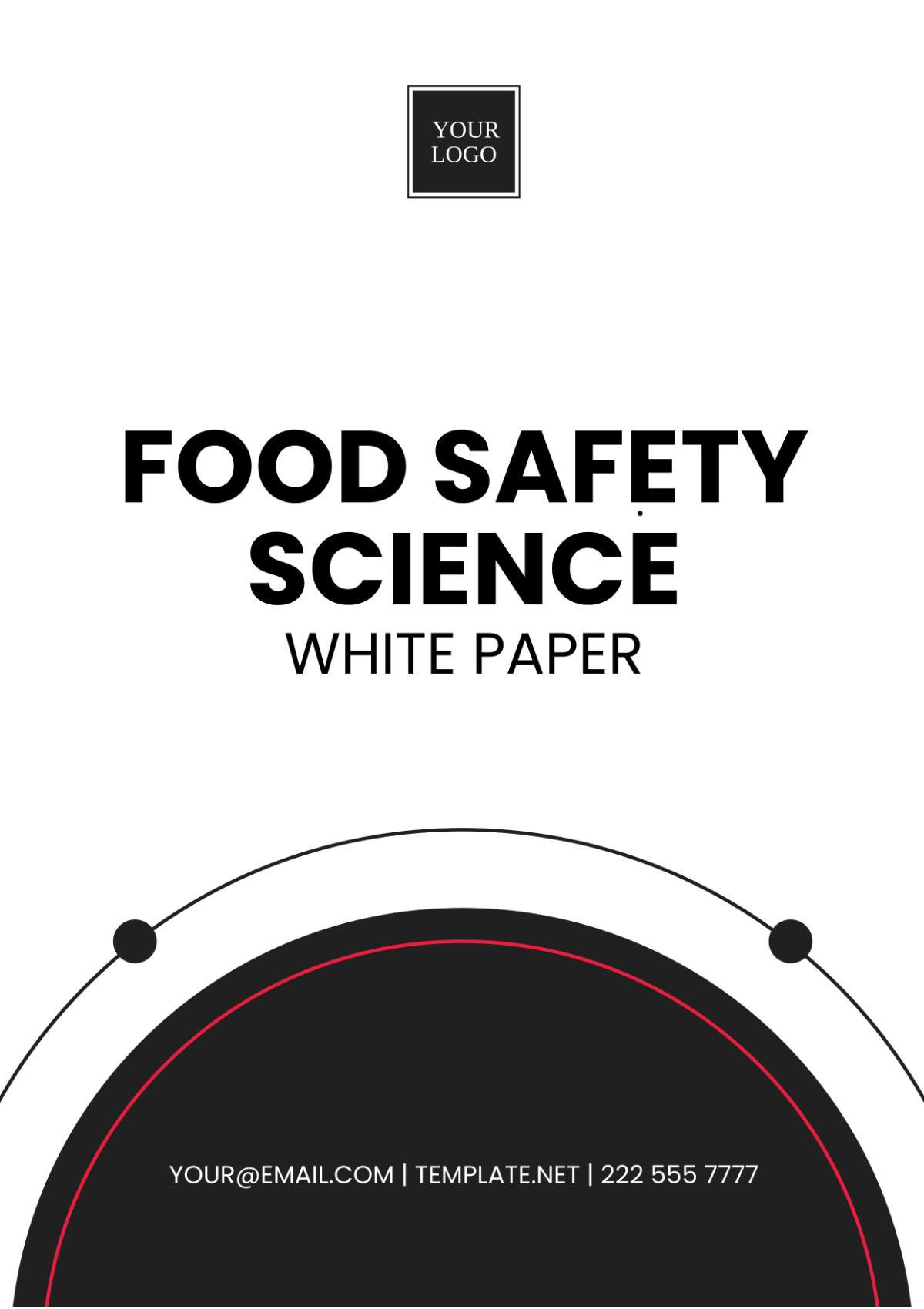Free Food Safety Science White Paper

____________________________________________________________________________________
Best Practices for Ensuring Food Safety in the Supply Chain
Prepared by: [Your Name]
For: [Your Company Name]
Date: [Date]
Department: [Your Department]
_____________________________________________________________________________________
I. Executive Summary

This white paper presents a thorough analysis and strategic recommendations tailored to [Your Company Name], aimed at fortifying food safety practices throughout its entire supply chain. With a focus on assisting food manufacturers and retailers like [Your Company Name], the document explores industry-leading practices and innovations to safeguard the safety and quality of food products from farm to fork.
II. Introduction
The paramount importance of food safety cannot be overstated, as it directly influences public health and brand reputation. Recognizing this imperative, [Your Company Name] must continually refine its processes to mitigate risks within its operations and supply chain. This document articulates actionable strategies and technologies that can be implemented to bolster food safety standards.
III. Understanding Food Safety Risks
Outlined below are the primary risks inherent in food safety across the supply chain:
Contamination of raw materials
Improper storage and transportation conditions
Cross-contamination during processing
Inadequate training for handling and processing
IV. Regulatory Requirements
This section delineates the key regulations that [Your Company Name] must adhere to:
Food Safety Modernization Act (FSMA)
Global Food Safety Initiative (GFSI) standards
Hazard Analysis Critical Control Point (HACCP)
ISO 22000 Food Safety Management
V. Best Practices in Food Safety
To elevate food safety standards, [Your Company Name] should contemplate the adoption of the following best practices:
Integration of advanced track and trace technologies
Implementation of comprehensive employee training programs
Regular audits and inspections
Cultivation of a robust food safety culture
VI. Case Studies
Examination of successful food safety implementations yields valuable insights. Below are a few illustrative examples:
Case Study 1: Implementation of Blockchain for Traceability at [Another Company Name]
Case Study 2: Zero-Waste Policies Implemented by [Another Company Name]
Case Study 3: AI-Driven Quality Control Initiatives at [Another Company Name]
VII. Implementation Plan
The following table delineates a phased plan for [Your Company Name] to fortify its food safety protocols:
Phase | Action Items | Expected Completion |
|---|---|---|
1. Assessment | Conduct a comprehensive review of current practices and systems | 2055-03-15 |
2. Planning | Develop an action plan based on assessment findings | 2055-04-30 |
3. Execution | Implement necessary changes and technologies | 2055-06-30 |
4. Monitoring | Regular review and adjustment of practices | Ongoing |
VIII. Conclusion

Ensuring the safety of food products presents a critical challenge necessitating continual attention and adaptation to evolving practices and technologies. By adhering to the guidelines outlined in this white paper, [Your Company Name] will be better equipped to manage food safety risks proactively, reinforcing its commitment to consumer health and safety.
IX. References
Document all sources of information, data, and research used in the white paper. Adhere to a consistent citation style.
_____________________________________________________________________________________
- 100% Customizable, free editor
- Access 1 Million+ Templates, photo’s & graphics
- Download or share as a template
- Click and replace photos, graphics, text, backgrounds
- Resize, crop, AI write & more
- Access advanced editor
Introducing the Food Safety Science White Paper Template from Template.net. Crafted for precision and professionalism, this editable and customizable template simplifies the creation of comprehensive white papers. Tailor content effortlessly to your needs, utilizing our Ai Editor Tool. Elevate your presentations with clarity and authority, ensuring your food safety insights shine. Explore excellence with Template.net today!





























